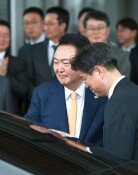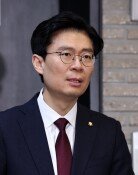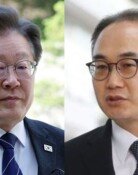Difference between Korean and U.S. presidential press conference
Difference between Korean and U.S. presidential press conference
Posted December. 24, 2013 07:06,
U.S. President Barack Obama`s last official schedule this year before he went on a winter vacation Friday was press conference at White House. Year-end press meeting is a long practice that 44 U.S. presidents have observed for 240 years. It has become an unwritten rule.
President Obama became a first-time Senate member in his early 40s and is the first American black president. He is hailed for his exceptional communication skills. He invited to White House for luncheon and dinner whoever could help promote policies regardless of political party and experience. When Congress was dilly-dallying, he directly communicated with the public.
Media reporters still complain, however. They are calling for more press conferences. According to White House, President Obama attended at 78 press conferences in the first four years of his first term. This translates into 1.6 times on monthly average, including 27 times in 2009, 19 times in 2010, 20 times in 2011 and 12 times in 2012. The figures are big in Korea standards, but lag behind monthly average of two times for a U.S. president. Former President George W. Bush held 2.18 times on monthly average, Bill Clinton 2.01 times and George H. W. Bush 2.85 times.
This is a natural response of U.S. people against the president who said he will chose newspapers without government rather than the government without newspapers. However, President Obama could feel depressed. Apart from briefings, he did 220 interviews and is still receiving complaint that he was negligent in communicating with media.
After taking office, President Park Geun-hye has done no press conference nor interview with the domestic media. She appears to have given up communicating with the public. By contrast, she participated in the interview seven times by U.S.`s Washington Post, U.K.`s BBC and France`s Le Monde. The Presidential Office is saying the president did three virtual press conferences including a meeting with media chief editors and bureau chiefs in April, political sector chiefs in May and commentary chiefs in July. However, the seminars that the president claim to have attended and the briefings where reporters ask what they want to know are different.
It would at least clear the cloud if President Park spoke of why she is not doing press conference or interview. The government has made it an important policy to normalize the abnormal and upgrade political culture, yet the president`s resistance to communicating with media is going against this very policy. University professors selected "daoxingnishi," which means to go against the tide, as the idiom of year 2013.
With presidential secretaries and high-ranking government officials also questing for communication with the president, President Park could feel tiresome on reporters` demand for more press meetings. Currently, the president make orders at Cabinet councils and meetings with secretaries and then government ministers, presidential office chiefs and secretaries are busy writing them down. In this situation, discussions could be very daring to do. When President Park leaves the government office for the day at 6 p.m., it is known that she communicate only through phones.
It should be allowed that the heads of foreign policy and reunification teams make spot reports to the president face-to-face. Currently, no minister or aide can dare say "You are wrong" to the president when she calls them up on phone for questions.
Even the power elites grumble that the president`s thoughts on foreign affairs and national security policies are the guideline and that those responsible for policies in each government agencies have little room to pursue different ways. The principles that President Park is stressing have become a dogma, and it is a problem that there are no signs of change. President Park`s response to issues of North Korea and the stagnant Northeast Asia situation was the creation of a permanent committee at the National Security Council. The success of this committee depends on whether face-to-face reporting becomes possible.







